Kyana Butler has mixed feelings about the Obama Presidential Center. The sprawling campus that will serve as a monument to the 44th President’s legacy is being built in her neighborhood on Chicago’s South Side, and as hopeful as she is about what the development could mean for her community, she is equally anxious about what it could do to local residents. Butler’s apartment is just a few blocks away from the proposed site in Jackson Park. Shortly after plans for the center were unveiled, she says, her rent went up by nearly $100, from $536 to $635 per month. She worries that the increase is a sign that a wave of gentrification will sweep through the neighborhood, displacing residents in favor of monied newcomers.
Butler is not alone in her apprehension. Since Chicago won the multicity competition for the center in 2015, celebrations have given way to recriminations as details of the proposal have come to light. Community organizers have clashed with city leaders and wealthy sponsors over who will benefit from the project. Conservationists balked at the proposal to plant the center on the edge of a public park, only to be steamrollered after the city easily approved construction in mid-May. Barack Obama himself rebuffed concerns about gentrification at a community meeting last fall. Now a last major battle is being led by a coalition of organizers, including Butler, who want the city of Chicago and the Obama Foundation to codify housing and employment protections for residents of the center’s surrounding neighborhoods, who skew African–American and working-class.
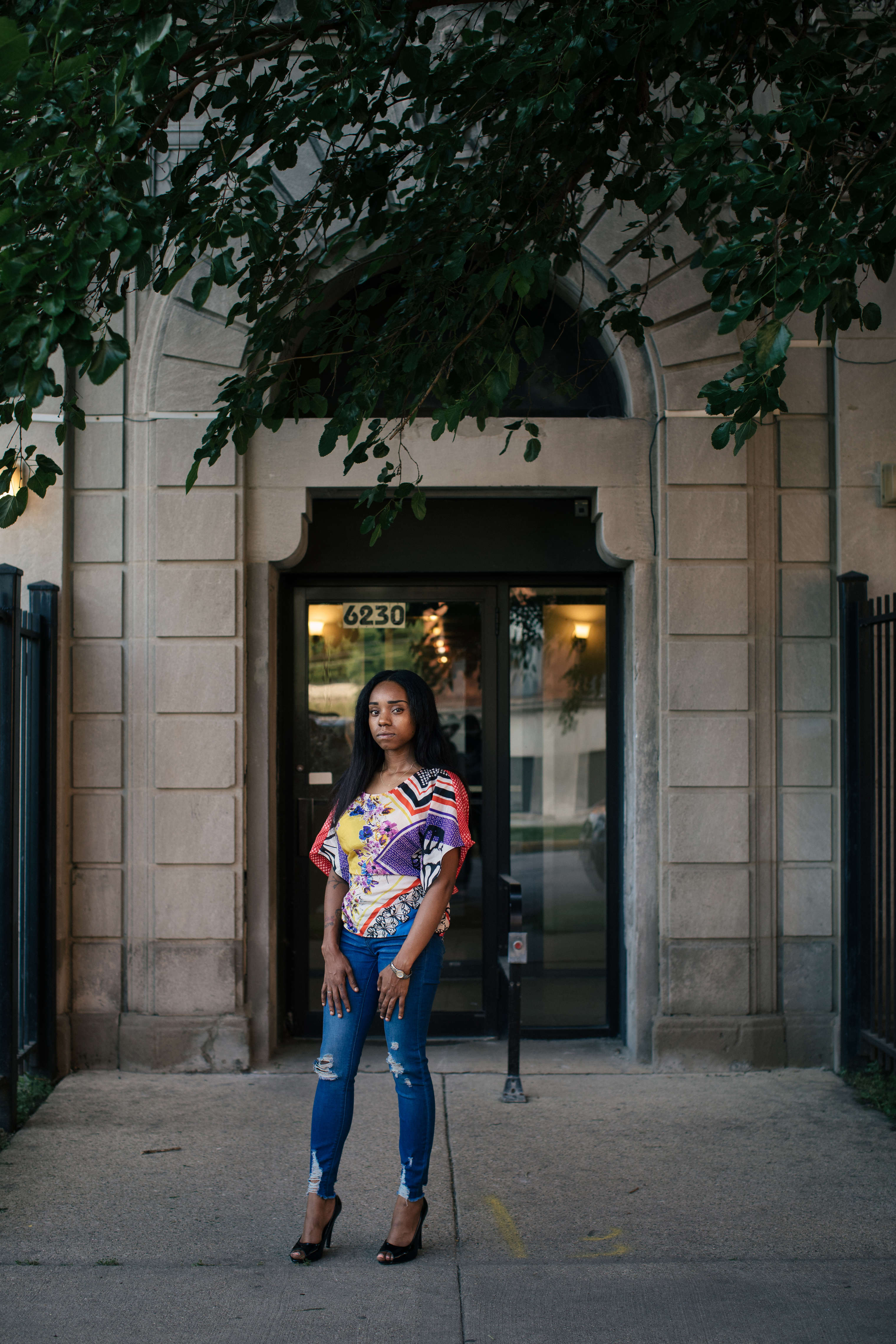
In one sense, this is very much a local fight about who benefits from the center, which is slated to open in 2021, and the projected $3.1 billion it will bring to the city’s economy. The neighborhood nearest the center, Woodlawn, has been devoid of development-—it is home to more than 300 vacant lots—and peppered with crime for years. But investors have begun flocking to the area since the Obamas chose Jackson Park as their desired site. In 2017, the real estate firm Redfin named it one of Chicago’s “hottest” neighborhoods.
South Side organizers want all stakeholders to sign on to a community-benefits agreement, or CBA, that they hope would ensure the neighborhood shares in the prosperity the project is expected to bring. Demands include reserving 30% of new and rehabilitated housing in the neighborhoods surrounding the center for low-income and working families, freezing property taxes for longtime residents, independently monitoring and assuring local hiring in and around the center, and requiring that a percentage of development costs in the area be set aside for affordable housing and employment programs.
As things stand, the CBA is facing an uphill battle, with little support from city officials. The Obama Foundation rejected the CBA but has incorporated some of the organizers’ demands in a list of community commitments, including a promise to allocate over 50% of its construction contracts to minority-owned firms. The foundation’s promises are a good start, say organizers, but because they are not binding, the campaign is not backing down.
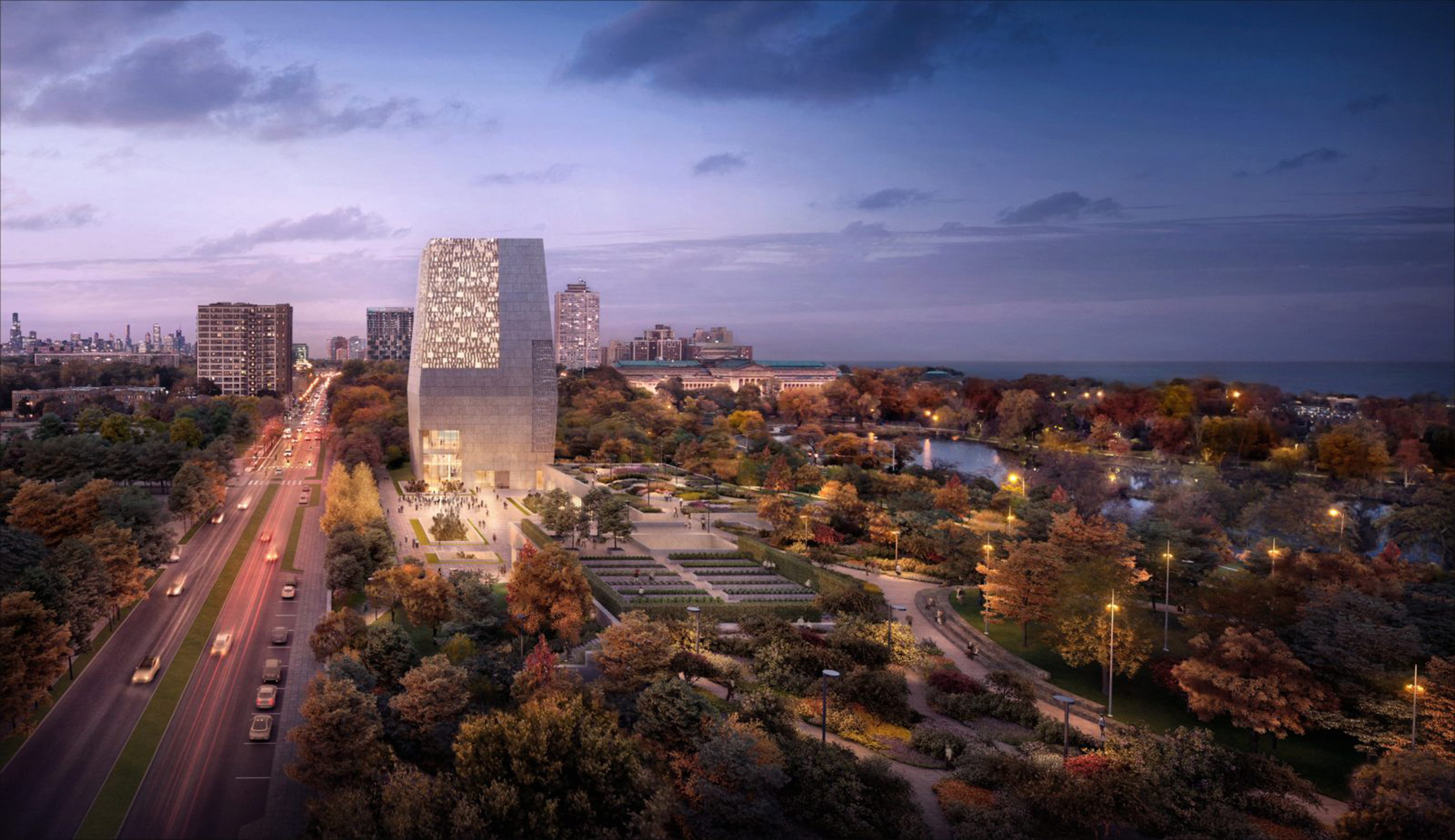
The stakes go beyond Chicago’s South Side. Obama’s desire to ground his -signature legacy project in the community he calls home has collided with some of the thorniest questions that have faced urban development for decades. How can urban renewal benefit, rather than displace, residents? What mix of public and private incentives can turn around blighted neighborhoods while bringing residents with them? In that sense, the Obama Presidential Center is proving to be not just a static monument like other presidential libraries but a living test of his impact as the nation’s first African-American President.
While the center is an ambitious project, it’s not a silver bullet for the South Side’s problems. But the Obamas do want to create a cultural attraction that can also serve as an economic catalyst for a part of the city that is often maligned or ignored. It will bring a level of investment that the area has not seen in decades. The campus will host a museum, a public library and convening spaces. A 235-ft. tower at the heart of the center was inspired by a photo of multicultural unity, with children’s hands stacked on top of one another, reaching up toward the sky.
“It’s really in many ways an homage to the South Side and President and Mrs. Obama’s story emerging out of this particular place,” says Louise Bernard, director of the museum at the Obama Presidential Center. “It’s a way of giving back to the people of Chicago and particularly to South Side residents.”
But even development that aims to improve a community inevitably disrupts it as well. And a President who touted his community-organizing roots and envisioned the center as a hub for civic engagement has at times found himself at odds with present-day organizers in his own backyard. For their part, those organizers have been in the difficult position of opposing a leader many of them revere. “I want the Obama center, believe me, I do. And I believe it’s going to do what [the Obama Foundation] is saying it will,” says Butler. “The center is going to be a big attraction to the South Side, but I don’t want that attraction to push us out.”
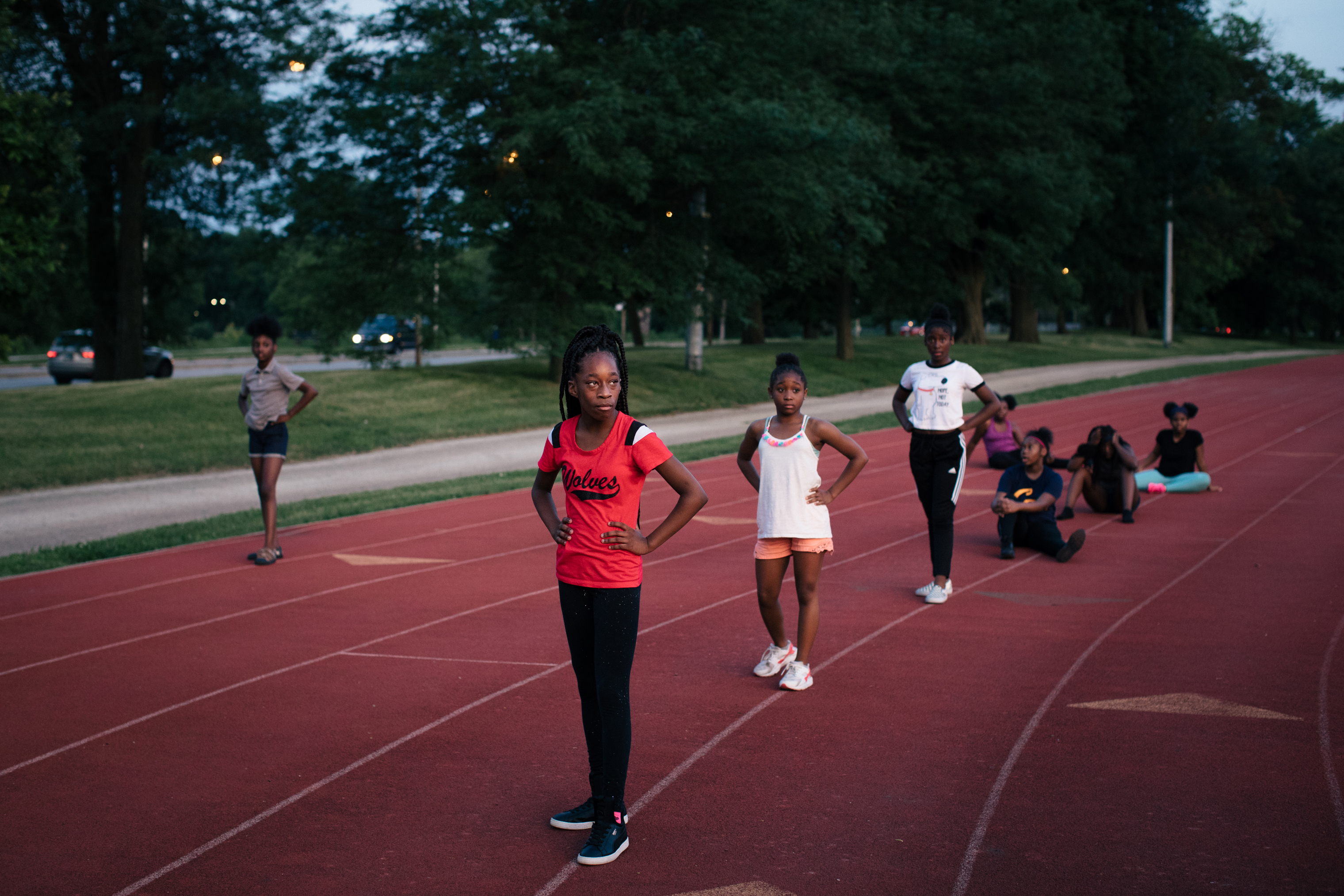
Locations in Hawaii, New York and elsewhere in Chicago were pitched as potential sites, but none garnered the level of excitement like the South Side. It added a fitting chapter to the narrative of Obama’s life: the local icon coming home to give something back. But in some circles, excitement turned to wariness as the details began to emerge.
News that the center was being dropped in Jackson Park, a historic public space designed by famed landscape architects Frederick Law Olmsted and Calvert Vaux, was met with apprehension. Chicago’s lakefront, just a skip away from the site of the center, is under a decades-old mandate to remain “forever open, clear and free.” And Jackson Park itself was designed as a democratic space that people from all walks of life could enjoy, with winding roads and passages that offer expansive views of Lake Michigan. The center would fundamentally change the park’s layout. Charles Birnbaum, president and CEO of the D.C.-based Cultural Landscape Foundation, questioned why Chicago would want to alter one of the city’s great civic spaces. “If Columbia University had said they were taking 17 acres of Central Park for this, they’d be laughed out of New York,” he says. “So why is this any different?”
To try to stave off what they consider a detrimental change, a collection of local residents called Jackson Park Watch wants as much of the park preserved as possible. Another, the Coalition to Save Jackson Park, made multiple Freedom of Information Act requests for details about the planning and use of public land. The group Preserve Our Parks filed a federal lawsuit accusing the city of not having the authority to transfer public parkland to the Obama Foundation. “This land belongs to the people of the city of Chicago who have bought and paid for it for over 100 years,” says Janet Geovanis of the Coalition to Save Jackson Park. “It is to be held in the public trust, for the benefit of the public.”
The Obama Foundation says the site was chosen with the local population in mind. By building within the park, says a foundation official, they would avoid displacing residents of the neighborhood and capitalize on the proximity to the Museum of Science and Industry to create a campus that would rival the grandeur of Grant Park downtown. City officials have given the center’s construction a green light, though the foundation has agreed to replace some of the parkland they’re taking elsewhere on the South Side and a plan to erect a parking lot in an adjacent park was scrapped.

To South Side organizers, the location of the center posed real opportunities and real risks. “If we take the approach that any development regardless of the impact is a good thing, I think we’re missing the forest for the trees,” says Jawanza Malone, who leads the Kenwood Oakland Community Organization. But the CBA they have proposed looks to be up against long odds. These kinds of agreements are often used in large-scale development projects to assuage local residents’ concerns about affordable housing, jobs and other issues. The goals of the Obama CBA are similar. Chicago organizers—who successfully hashed out a CBA with the city back when Chicago was vying to host the 2016 -Olympic Games and wanted to turn the South Side’s Washington Park into an Olympic Village—have had little luck getting either local officials or the foundation on board. Alderman Leslie Hairston, whose Ward 5 is home to Jackson Park, does not support a CBA but says she is working on a neighborhood stabilization plan. “There is no magic wand that’s going to cure all the ills of everybody,” she says.
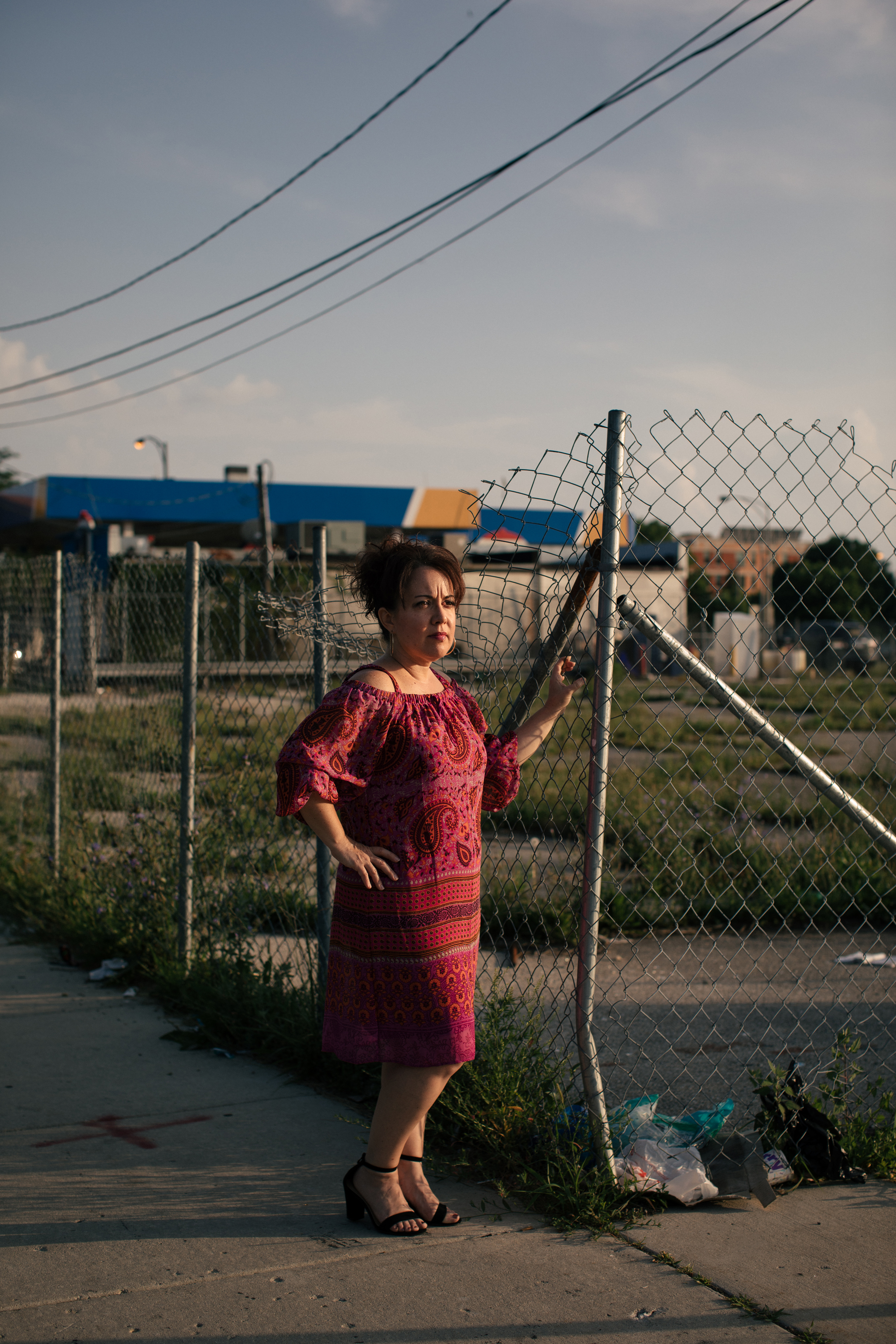
Obama himself has been dismissive of the CBA, telling residents earlier this year that if he signed an agreement with one group, other groups would be coming out of the woodwork to get agreements in writing. But Michael Strautmanis, who leads civic engagement efforts for the foundation and has conversed with thousands of residents about the center, says they have taken many of the organizers’ concerns to heart. Aside from its commitment to contract with diverse construction firms, the Lakeside Alliance, a group it has partnered with, is hosting training and job fairs to make sure residents are prepared for the 7,500 jobs that the foundation hopes the center will create. It is also working with another group, Emerald South, which includes members of the CBA coalition, to map out ways to address urban-development issues and gentrification.
The foundation does not own any of the land surrounding the site, nor does it have the capacity to zone land. But it says it’s thinking carefully about how it can use its platform to address challenges for the local community. “When President and Mrs. Obama talk about this neighborhood and how much they love it,” says Strautmanis, “they’re talking about this neighborhood with these folks there. It really is about, how can we make the people who are our neighbors a part of this?”
The battle over the center has been ugly at times. During the fight over parkland conservation, backers of the project tried to stoke racial animus. Prominent members of the black community in Woodlawn accused “outsiders” (read: white people) from the North Side of trying to hinder development in a predominantly black area. A local leader accused the conservationists of trying to “lynch our dreams” at a May 17 press conference.
Juanita Irizarry, executive director of Friends of the Parks, which has argued against the proposed use of parkland but supports both the center and the CBA, calls the rhetoric cynical. “The leadership of Chicago would like it to be that way, because it’s much easier to divide and conquer, but I don’t think it’s a race thing,” she says. “That’s an element of it, but it’s not clearly broken down like that.”
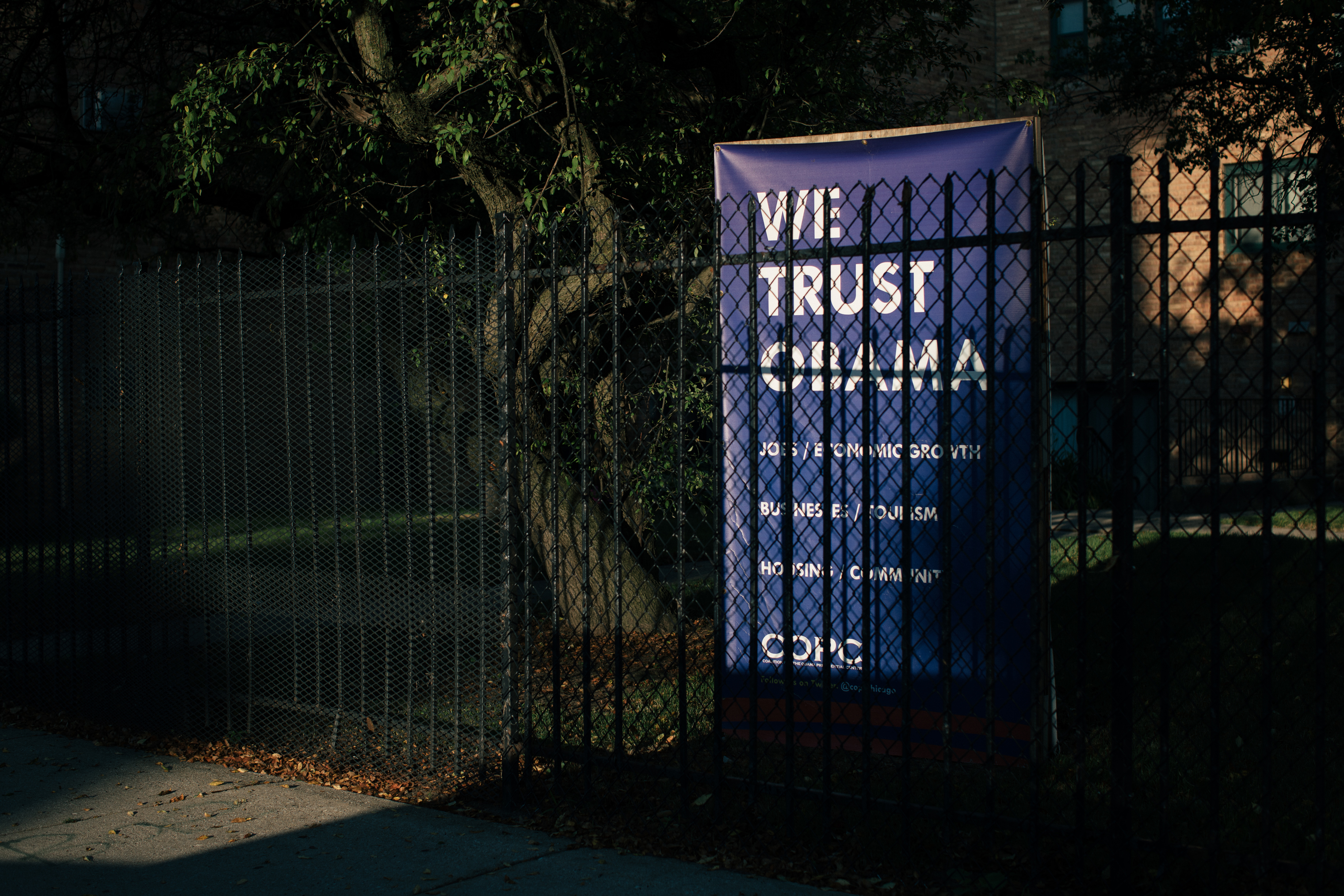
The CBA backers go out of their way to make clear that they want the center to come to Chicago. They point out that Obama is a venerated figure in the city. During his last election, in 2012, he won 84% of the vote in the Windy City; in some neighborhoods on the city’s black and brown South and West sides, the vote was near unanimous. But to many, the former President’s comments about the impact of the center have made him seem aloof and disconnected from the people he claims as his own. At a public meeting in February, Obama said that “too much development, too much economic activity” have historically not been the major issues facing South Side residents. He suggested that any gentrification would be a problem down the road, not right away. “We have such a long way to go before you will start seeing the prospect of gentrification,” he said. “Right now, we’ve got to worry about broken curbs and trash and boarded-up buildings. That’s what we really need to work on.”
This detachment surprised many Obama supporters. “This is nothing against the President,” says Malone. “But I wish he’d taken the time to look at what’s been happening in Woodlawn before he made his comments.”
For all the freighted relationships, this is ultimately a fight about economics. There are questions about what kinds of jobs are on the way: permanent or temporary, service-based or professional. An economic boost is seen as a benefit for a neighborhood like Woodlawn, where the median annual income is $24,000. But, there are already hints that the current population could find itself struggling to hold on. During the first half of 2017 alone, home values jumped 23.3% in the area, according to Redfin. Across the city, values grew at a rate of about 4.6%.

The Woodlawn area is in the backyard of the University of Chicago, which is the host of the Obama center, even though the building isn’t on its campus. The school and its neighbors have a fraught history. Dating to the 1950s, the university’s reach has extended into the surrounding neighborhoods—north in Hyde Park and Kenwood, and south to Woodlawn. Historically, large-scale and federally funded urban-development projects isolated and pushed out segments of the community. According to a study by the University of Richmond, some 4,000 families, most of whom were people of color, were pushed out of the area by university-led projects -between 1950 and 1970. The university has only continued to build in those neighborhoods. Shortly after the center plans were confirmed, the school announced its intention to build a 15-story hotel as well as a conference center just blocks away. All of which has left Chicago’s community organizers in a tough spot and in danger of being outmaneuvered by more powerful forces.
To Malone, two out of the three institutions that are determining what happens to these neighborhoods—the city and the university—have a track record that has resulted in the “marginalization and displacement of black people in particular.” He says that makes it imperative that members of the community have a seat at the table as planning continues. Strautmanis says the Foundation will maintain an open dialogue with residents and organizers and that both sides have one goal: making sure the people who live in this community benefit from this project.
Still, excitement over the center has been palpable. Ahead of an early-May city-planning meeting to approve its construction, hordes of supporters trekked downtown in the wee hours of the morning at the request of the Obama Foundation. Standing outside of city hall, they wore blue T-shirts emblazoned with the Obama Presidential Center logo and chanted, “Yes we can” as they cheered at passersby. Among them was Robert Emmons, 25, a Hyde Park resident who volunteers with the Obama Foundation. “This is an area where a casket is more familiar than a degree in certain circumstances,” he said of the neighborhood where the center will reside. “This is something beautiful coming to the South Side.”
That same day, Butler and Parrish Brown, another activist, interrupted the staid setting of the city-planning meeting with a boisterous protest just as it was coming to order. “No CBA, no vote,” they chanted. They were quickly escorted out, but the point of the interruption was clear: no matter how much they admire Obama, many local residents think it’s naive to blindly trust any developer, especially one that has dismissed their concerns. “What really bothers me,” says Brown, “is that a lot of people don’t know that they might be investing in their own displacement.” •
- Donald Trump Is TIME's 2024 Person of the Year
- Why We Chose Trump as Person of the Year
- Is Intermittent Fasting Good or Bad for You?
- The 100 Must-Read Books of 2024
- The 20 Best Christmas TV Episodes
- Column: If Optimism Feels Ridiculous Now, Try Hope
- The Future of Climate Action Is Trade Policy
- Merle Bombardieri Is Helping People Make the Baby Decision
